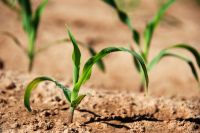
June is a gorgeous month to be out in the garden. With the days at their longest, flowers are blooming everywhere you look, and it’s time to enjoy the first delicious taste of your own home-grown fruit and vegetables. To help you make the most of your garden, here’s our list of the top gardening jobs for June.
What to plant in June
It’s finally warm enough to plant out courgettes, sweetcorn, tomatoes and peppers. Tie cordon tomato plants to stakes for support, and pinch out the side shoots.
It’s also time to sow tender herbs like basil. Fill a pot with seed compost and scatter basil seeds lightly over the top. Cover with a thin sprinkling of compost or vermiculite, water well and place in a propagator to germinate (or cover with a clear plastic bag and place on a sunny windowsill).
Take advantage of the fabulous ranges of summer bedding available now and fill pots and hanging baskets with colour. Give all your container plants a fortnightly feed with a high-potash fertiliser (tomato feed is ideal) to encourage the development of flowers and fruit.
What to harvest in June
Early potatoes should be ready to harvest around 10 weeks after planting, once the flowers have opened, but do a little digging first to check – the potatoes should be the size of hens’ eggs.
Keep harvesting lettuce, and sow more every two weeks for a constant supply through the summer months.
And the arrival of summer means the start of the strawberry season, so net your plants to stop the birds getting to them before you do.
Top 10 June garden jobs
- Run a Dutch hoe over your beds to cut down annual weeds before they set seed. Ideally, do this on a dry day so that the weeds shrivel and dry up in the sun.
- Be waterwise – if you need to water, do it in the early morning or evening
- Mow your lawn once a week. During dry periods, mow on a higher setting.
- Watch out for aphids and slugs – remove them by hand if possible, and never spray plants that are in flower, as this could harm bees.
- Pinch out the growing tips of fuchsias to encourage bushy plants
- Stake tall plants
- Thin out overcrowded drifts of hardy annuals
- Cut back the leaves of spring bulbs like daffodils and tulips once they have turned yellow
- Deadhead roses and pick sweet peas to encourage them to keep flowering
- Clip privet, box and yew hedges (provided no birds are nesting in them)
Finally, if you haven’t had time to sow vegetable seeds or your beds are looking bare, don’t despair. Our garden centre is packed with seedlings ready to be planted out, so pop in now and stock up for summer.

